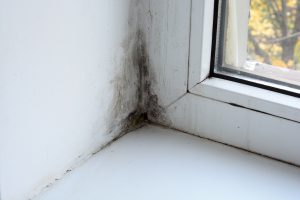
Being exposed to mold can cause health effects such as nasal stuffiness, throat irritation, wheezing, eye irritation, and skin irritation. If you have mold allergies or have immune compromising health issues, the impacts can be even more serious. Mold can be most toxic to people with chronic lung diseases and can result in serious lung infections.
If you suspect that you have mold in your home, or confirm that it is there, you’ll want to bring in the professionals to perform mold remediation. Not properly addressing mold in your home could cause many health issues down the road. If handled improperly, the spreading of mold spores will occur which can linger inside the home and even inside your HVAC ductwork.
Keep reading to learn more about the mold remediation process you can expect if you find yourself in a situation where you have mold in your home.
A Brief Primer on Mold
Mold growth can start in as little as 48 hours after a flood or water leak. Mold spores are microscopic and float through the air. This means that they can enter your home through open windows or door, HVAC systems, or even come in on your clothes or a pet.
Mold thrives from moisture and when mold spores are exposed to moisture, they grow into colonies. These colonies produce allergens, irritants and even toxic substances called mycotoxins. There is often a strong musty odor associated with mold, which might tip you off to the presence of it. Otherwise, professionals can test the air or other surfaces in your home to determine if mold is present. A thorough mold inspection and moisture survey should always be conducted in conjunction with any mold testing.
To keep your home mold growth free, be sure to address any unwanted water or flooding in your home as soon as possible and keep the humidity at or below 45%. When a home has too much moisture, mold can thrive.
What is Mold Remediation?
Mold remediation is the process of removing materials affected by mold. This could be flooring, cabinetry, drywall, wood, or other materials inside your home. The mold remediation process does not necessarily kill the mold. Rather, it removes it from your home.
Proper mold remediation requires several steps to make sure it is effectively done and removes all of the mold in the impacted areas. The goal is to remove all contaminated materials and contain any fungi or dust contaminated with mold.
Mold Remediation Process
Once you have confirmed that mold is present, remediation can begin. The first step should include setting up a method to contain the mold and properly ventilate the area. As the mold is removed, you will want to make sure the mold spores do not become airborne, impacting other areas in the home or business.
Once proper containment and HEPA-filtered ventilation is set up, the cleaning and disinfecting can begin. This is where the mold is actually remediated and where the impacted materials are disposed of. Once this is finished, a biocide or moldicide solution can be applied to the area to prevent future mold growth. This is not always needed but can be useful for certain situations.
Finally, once all moisture or humidity concerns are addressed, an encapsulant is applied to the area. This will help retain odors and can help inhibit growth in the future.
The Bottom Line
It’s important to make sure you are following proper mold remediation procedures, whether you’re doing it yourself or hiring a professional. It’s smart to hire a third-party company to supervise the remediation and inspect and test afterward. This ensures that there is no conflict of interest and the work is properly done.
Check out our site for more information about our mold remediation supervision services.
